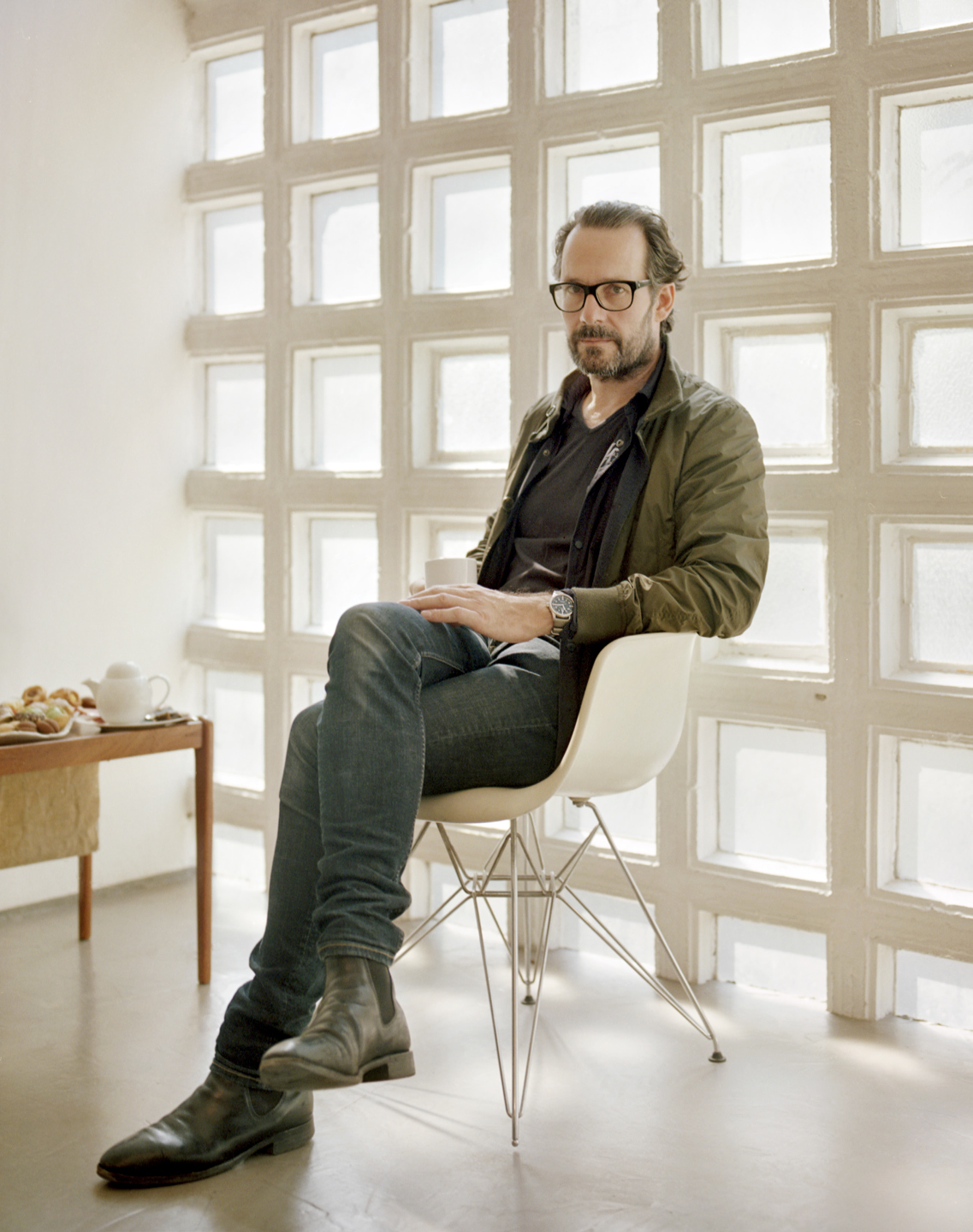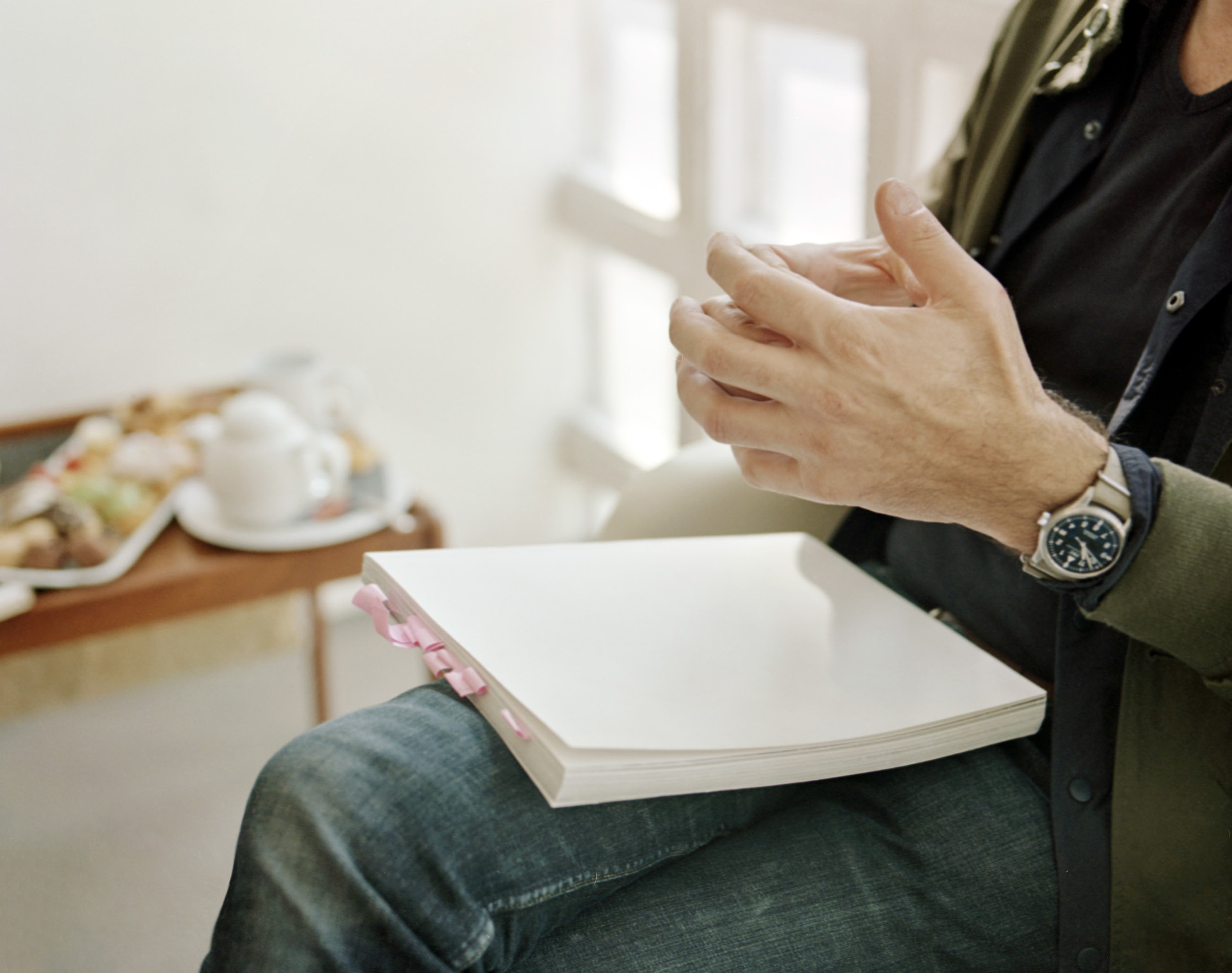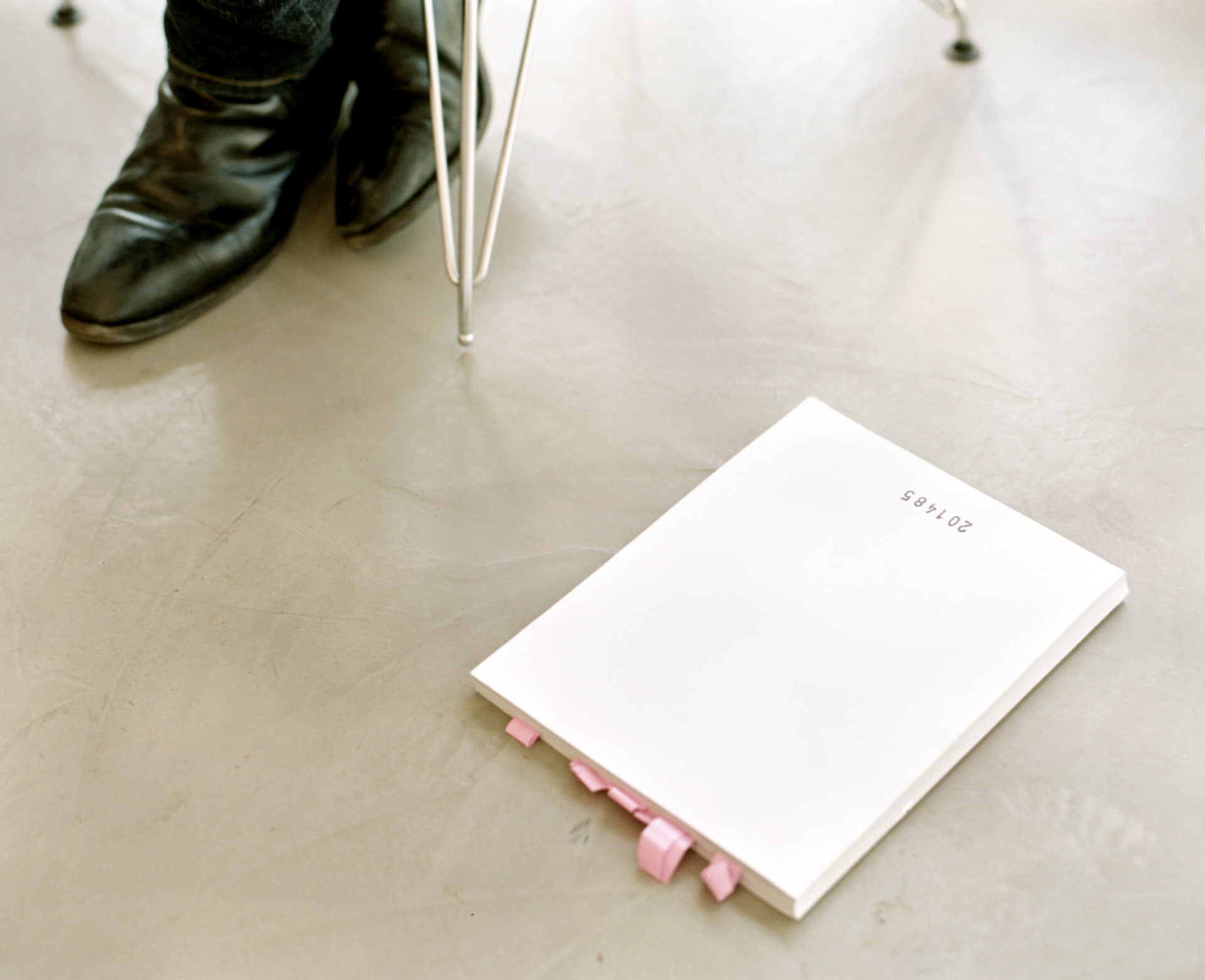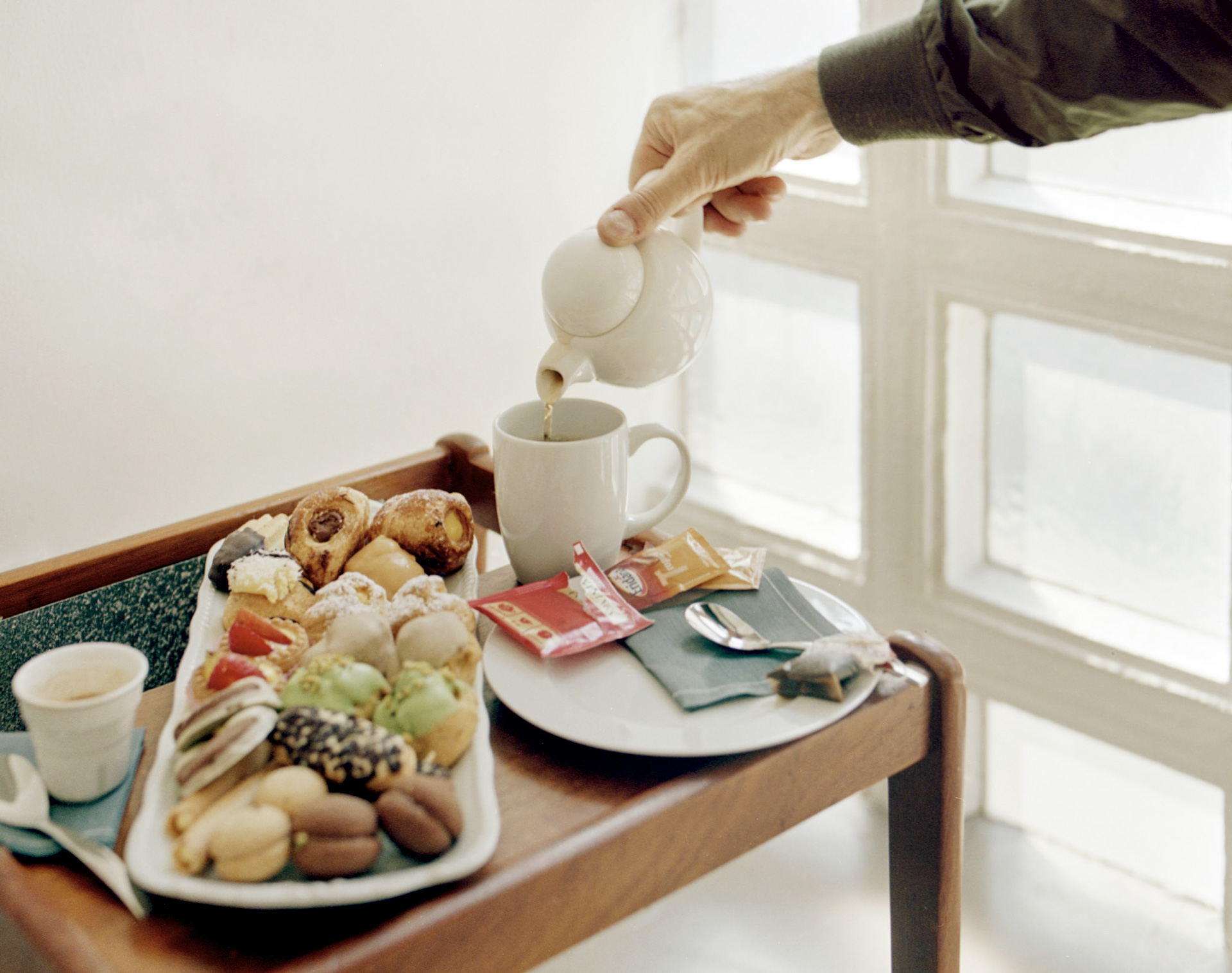Breakfast with Konstantin Grcic
At Mutina HQ Fiorano Modenese, Italy
Conversation with Valentina Raggi Photography Andy Massaccesi

-
VRLet’s start talking about your new collection for Mutina, NUMI. Is this the first time you’ve designed any ceramics?
-
KGYes it's the first time I’ve even looked at tiles! I'm not an architect and I’ve never found myself having to choose tiles for a project. Tiles for me were just something you saw in the kitchen and the bathroom: they're there and that's it. But sometimes coming that fresh into a project is a great opportunity. Of course, I tried to learn as much as possible. I need to educate myself in order to really get to know a subject, I need to understand the material, both the very technical aspects and the culture behind it. The former are the art facts and the latter the soft facts that are more difficult to uncover. First of all, it’s essential to understand the scale when working with tiles, because you work on the multiplication of an element. I’ve designed lot of products, but I’d never considered the potential of infinitely multiplying an object, that giant modularity, as is the case for tiles, which can be used indoors and outdoors. A chair is a chair. Yes, you can put a few together, but it’s a completely different matter.
-
VRThe interesting thing about the NUMI collection is that you created geometrical patterns by alternating opaque and glazed finishes on the surface. There is something very seventies in this return of the glaze. It suddenly reminded me of Gio Ponti’s wonderful pieces. It’s a technique we haven’t seen in a long, long time. How did you have this idea?
-
KGIt wasn’t intentional, sometimes that kind of reference just suddenly appears. You do something similar to something with an unexpected result, so I just let those results happen and I accept it. I followed Mutina on this challenge to revaluate the glazed ceramic. Nowadays, industries have their own dynamics, so these old techniques get lost and everybody starts doing something else. We've taken this traditional treatment and re-developed it in a contemporary way. The result is something decorative and a way of imagining, it reflects light. It's a beautiful kind of quality, sensual and elementary.
-
VRWas there an initial intention behind the project?
-
KGIt's very difficult to tell you the entire story, this is the result of a year’s work. There are many aspects that influence a project. As a designer, I never consider my role as being an authority and I think the process is always a dialogue with my team, with the brand. And also, it’s something very empirical, you say: “Let's try this way, let's see where we go” and maybe at the end of that route you find a technique, a language or a product you hadn’t thought of at the beginning. Our first proposal to Mutina was not a concrete idea, we made a book, which was the beginning of the dialogue between me and the brand. It would have been nice to show you that book, it says a lot about our approach especially when a project is unknown territory and that’s the kind of project I like because it means I have no preconceived ideas… Oh, wait, I have it here somewhere, I can show you!
-
Grcic asks for the album and shows it to me. It is a wonderful catalogue of inspirations, taken from architecture, nature, details of the city…
-
KGWe made pages of things that we like, it's like a dictionary. We go through a lot of different inspirations, even looking at the art world. I don’t make slides, I still need to work on paper, on concrete things, and I need to smell the material of the project, to smell the ceramics!
-
VRYou started out with this album of inspiration and you ended up with a collection of pieces that seem more like abstract works of art. I’ve seen the tiles on the wall, with those signs on the surface that could be handmade by an artist. They could each stand alone quite easily. How did you have the idea of combining opaque and glaze on the surface?
-
KGWe discussed the patterns, with post-its! Sometimes it can be too easy to fake things with computers, fortunately we didn't do that, I manually designed the decoration and we worked on this material to obtain this particular result. It was quite a challenge!
-
VRBut there’s no doubt you succeeded! What’s the next step?
-
KGMaybe to come back to this and say: “Well, there is another place to travel to”. NUMI is a journey that ended with the collection, I'm happy with it, but as a traveller this is not the place for me to rest. I'll move on, the more you travel, the more you learn. Because I think we work as a sort of travel group. On a personal level, it was very nice to collaborate with the people from Mutina, they grew up with tiles and this is something fascinating and very rare today. And I think that is a problem we have today when producing new things. We can do the traditional tile cliché but that is not the same thing in the long term.

-
VRWell, it seems that you’ve really taken to ceramics. So will you continue working with this material?
-
KGFor Mutina? Yes of course. For me the perfect scenario would be to work on different things at the same time, different scales, different levels, different challenges and different feelings. Mutina in particular is somewhere in-between the second and third dimension. I mean, a tile is apparently two-dimensional but you can transform its surface into a three-dimensional shape, which is amazing. There’s still a lot to discover, to study and to work on.
-
VRWell, you just really highlighted the word “different” and I immediately became curious to ask how you see the evolution of design. You are a very busy and enthusiastic design expert. A very important designer of course, but you are also on the jury of International awards and who better than you could have a panoramic view of the design field? Is anything changing, indeed, is it different, since you started?
-
KGI've been in this business for 25 years, which is a very long time, and I’ve seen massive change. Of course, it's always difficult to have a panoramic view of the situation because I'm part of the evolution. But, personally, I think I've always tried to keep learning, I want to be able to change and I'm not afraid of that. There are some things I can change and some that I can't. The great difference is that today I live in a digital world, but my roots are still in the analog world! And that connection with the real and concrete world is still very important to me, I see it as a quality, an advantage. I'm fascinated by the young generation, they take to the digital world very naturally and easily but they have never touched the material, they don't really know it.
-
VRThey don’t smell the ceramics!
-
KGYes, exactly! (he smiles). I think that a lot has changed, I have a romantic view of the industry and I do want to work within that industry, it's about the company and the people. A 3D printer is not a factory, it's a machine and that is a huge difference but I see that my romantic idea of the industry today is no longer shared by hardly anyone. I hate indifference. And digital technology has this kind of risk. I find an attitude, a positive aspect in the mistakes and imperfection of the human touch. The artist is somebody who has to make decisions and that's why art remains so fascinating, a very old painting can still really agitate you.
-
VRI’ve drunk my espresso very quickly but I’m not leaving so take your time with your cup of tea, and all of my questions! Do you want one of those beautiful pastries?
-
KGNo problem, I’ll drink it slowly.
-
VRWell, you’ve defined yourself as a romantic designer. I also read in another interview that you consider your style not minimalistic but simple. How do you describe, balance and, I’d say compress, the extensive research that goes into every project – and every polished and stylish outfit you choose in the morning! - with the simplicity of your look and products?
-
KGSimplicity is perhaps my motivation in a process of understanding something, my approach is analytical, I'm quite rational and I can't change it. Simplicity is a way of getting to the bone of something, to the root. Everything we design is a product, but the product is there to be used, and I think pureness and immediacy are necessary in order to feel comfortable with something, it's the quality of an object, something that I can understand. Simple but not too simple, there must be something strange. It's a question of the slightest imperfection, because perfect simplicity kills the object. Simplicity combined with something that is not so simple brings it to life.
-
VRIs this perhaps a sort of revaluation of the iconic Mies van der Rohe motto “Less is more”?
-
KGYou can use “Less is more” in way that is totally untrue, which is why I don't believe in formulas. I’m not even interested in having a big career, I love those journeys where we don't know anything, it means that you always have to adapt and change everything. So I never do any replications of my design, I don’t have a style as a sign.
Simple but not too simple, there must
be something strange. It’s a question of the slightest imperfection, because perfect
simplicity kills the object.

-
VRHave you got a dream? To design a particular object, to collaborate with a certain brand you like…
-
KGYeah, there are many. But I think that the way I see the project is an essential part of the project, because I don't even ever have a final shape in mind. I could say: “I would like to work with these people, this factory or this technology” but it would never be the final result.
-
VRAfter this Italian journey, you’ll go heading back to your studio in Munich. Which projects await you there?
-
KGWe're doing projects that are based on furniture, which for me is the love of my life and that means I have to establish a healthy distance from it. I always come back but in order to keep this passion alive I have to find new perspectives. Now I'm interested in furniture on such a large scale that it almost becomes architecture or space. Frankly, it's not very clear at the moment. That furniture becomes an installation. Public and domestic, it's interesting how the border has become so blurred nowadays.
-
VRVery interesting and quite strange. Let me try to understand, do you mean design pieces that you can live in?
-
KGNot necessarily. It might be a big sofa, but I'm treating it in a very particular way with a totally different point of view. Think about the Italian word for “suit”, which is “abito”, and the same word can also mean that you live in a place. So, it is something big or small, something you can wear or something you enter in a different way. The actual physical scale of our world, and of design creations too, is not so important nowadays. It's more an intellectual thing, a consideration about how we approach to the world. So now I want to change my own perspective, I love what I do but in order to refresh this passion, I need to find new challenges, and my new challenge is to change the scale. I know that right now this is a sort of meta-idea that I’ll evolve in different ways and that will have different ramifications for my future projects, perhaps for years to come, and I don’t know where it will take me. After that, I will change the focus of my macro-research to another meta-idea.
-
VRSo Grcic is the new Alice in Wonderland?
-
KGHahaha, something like that.

-
VRI’m sure you find a lot of inspiration with all your travels all over the world.
-
KGYes, I really do travel a lot, especially because my studio is in Munich but my house in Berlin so I live between those two cities.
-
VRWhy don’t you move?
-
KGI have a girlfriend and child in Berlin. And I like the duality, it's part of changing perspective, it's a good mix. The studio and my work focus are in Munich and Berlin is more a city where I try to reach out.
-
VRWe’ve talked about journeys, both metaphorical and real, but where do you think the most interesting place in the world for design is?
-
KGI'm sure that in the decades to come the East, China above all, is going to be very important. But today… well, I don't really know enough about it, but while architecture may be much more advanced in China, at the moment I think that the top spot for design is Europe and Italy. Especially with the excellent food too, there is huge potential here and the culture means Italy is still a fascinating country for design, because you have people with traditional know-how. If you know the word “progettare”, a word that does not exist in other languages, well, it says a lot about you.